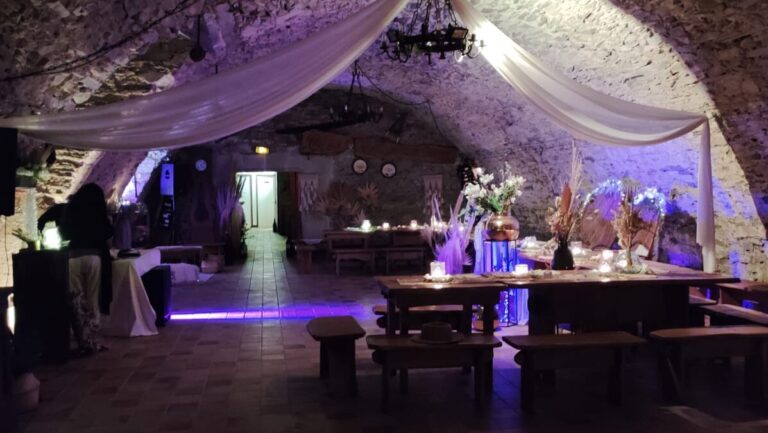Château de Pornic: A Historic Fortress in Pornic, France
Visitor Information
Google Rating: 4.4
Popularity: Low
Google Maps: View on Google Maps
Official Website: www.chateaudepornic.fr
Country: France
Civilization: Unclassified
Remains: Military
History
The Château de Pornic is situated in the town of Pornic, France. Its origins date back to the 10th century when it was first established by Alan Barbetorte, also known as Alan Wrybeard, Duke of Brittany. At that time, the castle was constructed as a wooden fortress, serving as a defensive outpost to secure the entrance to the settlement of Pornic.
In the 12th century, the original wooden structure was replaced by a stone castle under the ownership of the Lords of Rais. This reconstruction marked an important development in its defensive strength and durability. The new stone fortress not only reinforced the protection of the port area but also increased the castle’s strategic importance in the region.
The castle’s ownership shifted in the 15th century to Gilles de Rais, a notable figure of that era. However, during Gilles de Rais’s trial, the Duke of Brittany, John V, confiscated the property. This seizure reflected the political and legal upheavals surrounding Gilles de Rais at the time.
By the 18th century, the fortress was held by Marquis Alexandre de Brie-Serrant. The French Revolution brought significant change, as the Marquis’s properties, including the castle, were confiscated. Subsequently, the castle fell into a state of neglect and disrepair.
During the 19th century, the castle changed hands multiple times among creditors, reflecting financial difficulties. In 1824, Joseph Le Breton, a merchant and local official, acquired the castle and began efforts to restore its condition. Nearly six decades later, in 1886, further restoration work was carried out by François Bougoüin, an architect who introduced Italian-inspired elements, drawing on designs seen in nearby castles such as the Château de Clisson.
Since the late 20th century, specifically from 1986 onward, the Château de Pornic has been recognized for its historical significance. The French Ministry of Culture granted protection to several of its medieval structures, including the towers, the curtain walls except those from the 19th-century reconstruction, and the access ramps, ensuring their preservation.
Remains
The Château de Pornic is perched on the northern edge of Pornic’s port, with one side bordered by the Atlantic Ocean, providing natural defense and control over the harbor and surrounding bay. The site’s layout reflects its original defensive role, incorporating towers and curtain walls—defensive walls that surround and protect the main areas of the castle.
The fortress’s earliest construction in wood gave way to more lasting stonework in the 12th century. The surviving walls and towers date largely from this medieval phase, displaying traditional stone masonry techniques aimed at resilience against attack.
The present-day structure also includes notable examples of 19th-century restoration. These renovations introduced fully rounded, arched windows framed with brickwork, a characteristic detail inspired by Italian architecture. Such elements resemble the style of the Château de Clisson, highlighting a blend of medieval form with later decorative influences.
Among the protected features are the access ramps, which were part of the castle’s defensive layout, facilitating movement while maintaining strong control over entry points. Most curtain walls seen today remain from the medieval period, having survived or been carefully preserved, except for specific sections renewed during 19th-century restorations.
Overall, the Château de Pornic preserves a layered history in its remaining structures, combining well-maintained medieval elements with later architectural interventions. Its protected status ensures the survival of these key features, allowing the castle to stand as a clear witness to its long and varied past.










